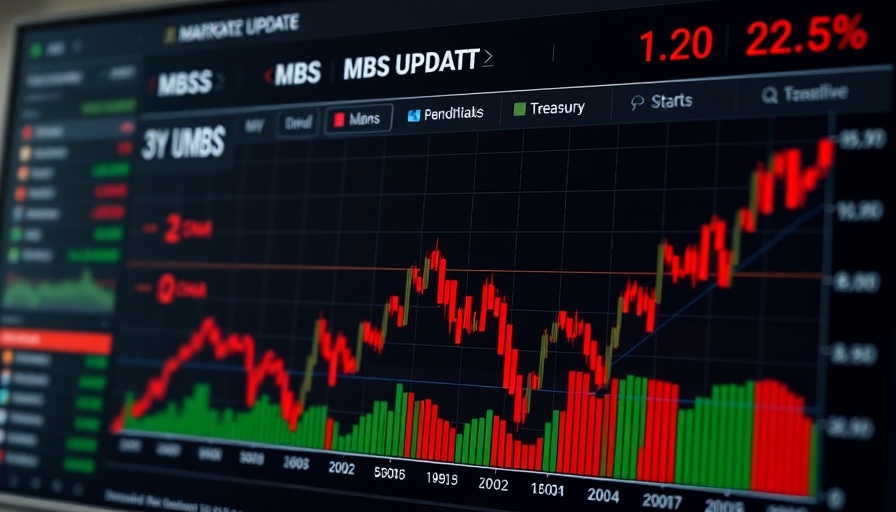
Understanding CPI in the Context of Recent Market Trends
The world of finance and markets can often feel overwhelming, especially when critical data points like the Consumer Price Index (CPI) come into play. In recent days, the bond market, buoyed by friendly economic data and a robust 10-year Treasury auction, has pushed yields lower. But as we await Thursday's CPI release, it’s essential to reflect on how these shifts affect personal finance and investments.
The Impact of Producer Prices on Consumer Expectations
The latest figures from the Producer Price Index (PPI) revealed a decline of 0.1%, contrasting sharply against expectations of a rise. Despite this promising news, the high base effect from previous months clouds the interpretation of this decline. For many consumers, the understanding of these changes is crucial. When producers face lower prices, it can signify potential savings for consumers in the long run, even if immediate impacts are not seen. This aspect demonstrates the complex interplay between various economic indicators and their subsequent effects on personal finance decisions, particularly for those navigating tight budgets.
High Bar Set for CPI: What It Means for Homeowners
The anticipation surrounding the CPI release is palpable, especially considering its central role in determining inflation. Homeowners and potential buyers have a vested interest in understanding this data as it directly influences mortgage rates. If inflation remains stubbornly high, as indicated by a 2.8% year-over-year increase in core producer prices, mortgage rates may not decline as swiftly as desired. For individuals and families looking to make a home purchase, these economic signals can dictate not only the timing of their decisions but potentially the financial health of their investments as well.
Why Understanding Economic Data is Key for Investments
Given the volatility of economic indicators like the PPI, investors should remain vigilant and informed. Last month's unusually high PPI created “base effect” issues that further complicate matters. Consequently, having a nuanced understanding of these economic metrics can empower individuals to make better investment decisions. Those engaged in real estate or other investment strategies must consider macroeconomic trends to position themselves effectively in the market while mitigating risks associated with fluctuating yields and inflation.
The Emotional Angle: What This Means for Everyday Families
As families navigate their financial journeys, the uncertainty of economic forecasts can evoke a mix of anxiety and hope. How does a family budget for groceries or plan for a vacation when inflation appears unpredictable? Understanding that these broader economic trends can directly impact household costs and savings allows families to prepare strategically, enabling more informed decision-making. For many, this knowledge not only protects finances but also fosters a sense of security amidst market fluctuations.
Bonds and Yields: A Closer Look at Current Trends
Market movements recounted throughout the day illustrate how responsive bonds are to economic data. Following the PPI release, we witnessed a significant uptick in Treasury purchases, pushing yields on the 10-year bond down to 4.026%. Such movements highlight the ongoing interplay between bond prices and economic signals. For everyday investors, understanding this relationship is critical, especially when navigating investment portfolios. Access to bonds might provide a safety net amid uncertain times, and knowing how to leverage these assets can offer a strategic advantage.
Navigating Economic Predictions: Future Outlook
As we look ahead to future CPI reports, it's vital to consider how ongoing economic conditions will shape our financial landscape. Could this be a turning point leading to stabilized prices? Or are further adjustments necessary as volatile data continues to circulate? Staying attuned to these predictions not only equips us with knowledge but also encourages adaptive planning. For investors and families alike, being proactive—rather than reactive—can significantly shape the outcome of financial decisions in uncertain times.
Take Charge of Your Financial Journey
As we process this critical economic information, consider how you can leverage this knowledge to make informed decisions for your financial future. Reach out to financial advisors, explore investment options that align with current market trends, and take control of your financial journey. Remember, informed decisions today can pave the way for better financial security tomorrow.
 Add Row
Add Row  Add
Add 




Write A Comment